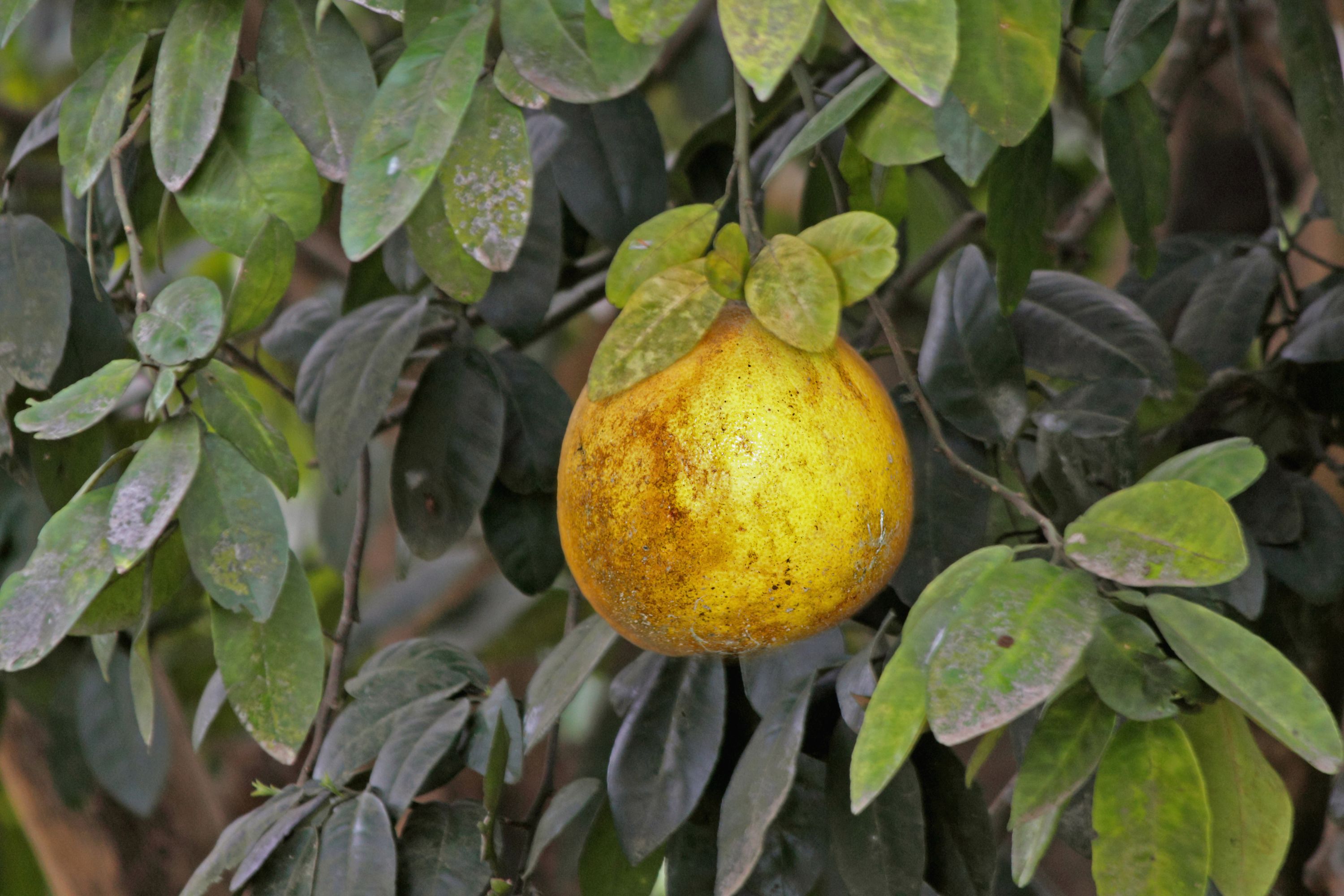Pomelo
(Citrus grandis)

Description
The pomelo or in scientific terms Citrus maxima or Citrus grandis, is the largest citrus fruit from the family Rutaceae and the principal ancestor of the grapefruit.It is a natural, i.e., non-hybrid, citrus fruit, native to Southeast Asia. Similar in taste to a sweet grapefruit, the pomelo is commonly consumed and used for festive occasions throughout Southeast Asia. Like the grapefruit, the pomelo has the potential for drug interactions. The pomelo tree may be 5–15 m (16–50 ft) tall, possibly with a crooked trunk 10–30 cm (4–12 in) thick, and low-hanging, irregular branches. Leaf petioles are distinctly winged, with alternate, ovate or elliptic shapes 5–20 cm (2–8 in) long, with a leathery, dull green upper layer, and hairy underleaf. The flowers single or in clusters are fragrant and yellow-white in color. The fruit is large, 15–25 cm (6–10 in) in diameter, usually weighing 1–2 kg (2–4 lb). It has a thicker rind than a grapefruit,and is divided into 11 to 18 segments. The flesh tastes like a mild grapefruit, with little of its common bitterness (the grapefruit is a hybrid of the pomelo and the orange).The enveloping membranes around the segments are chewy and bitter, considered inedible, and usually discarded. There are at least sixty varieties.The fruit generally contains few, relatively large seeds, but some varieties have numerous seeds. The juice is regarded as delicious, and the rind is used to make preserves or may be candied. In Brazil, the thick skin may be used for making a sweet conserve, while the spongy pith of the rind is discarded. In Sri Lanka, it is often eaten as a dessert, sometimes sprinkled with sugar. In large parts of Southeast Asia where pomelo is native, it is a common dessert, often sprinkled with or dipped in a salt mixture. It is eaten in salads. In the Philippines, a pink beverage is made from pomelo and pineapple juice. The fruit may have been introduced to China around 100 BCE.In East Asia, especially in Cantonese cuisine, braised pomelo pith is used to make dishes that are high in fibre and nutritional value and low in fat.
Taxonomic tree:







